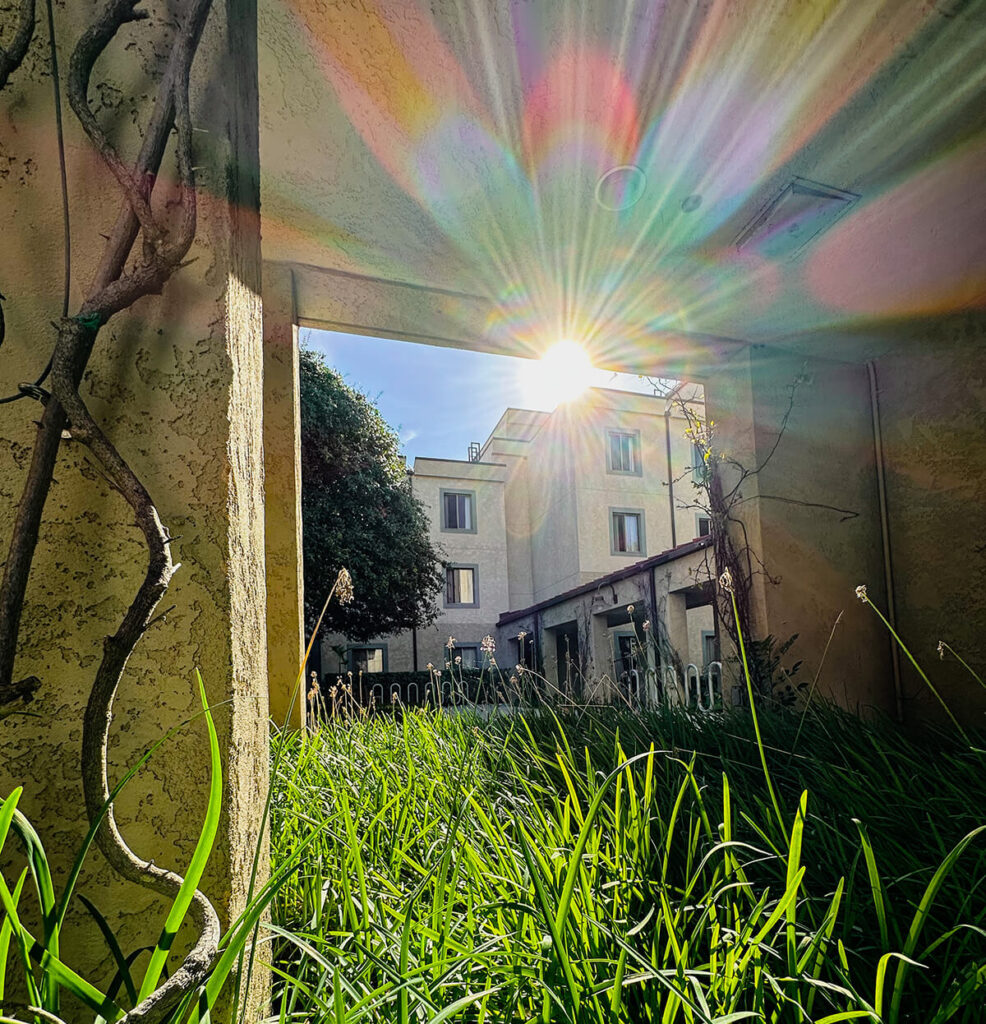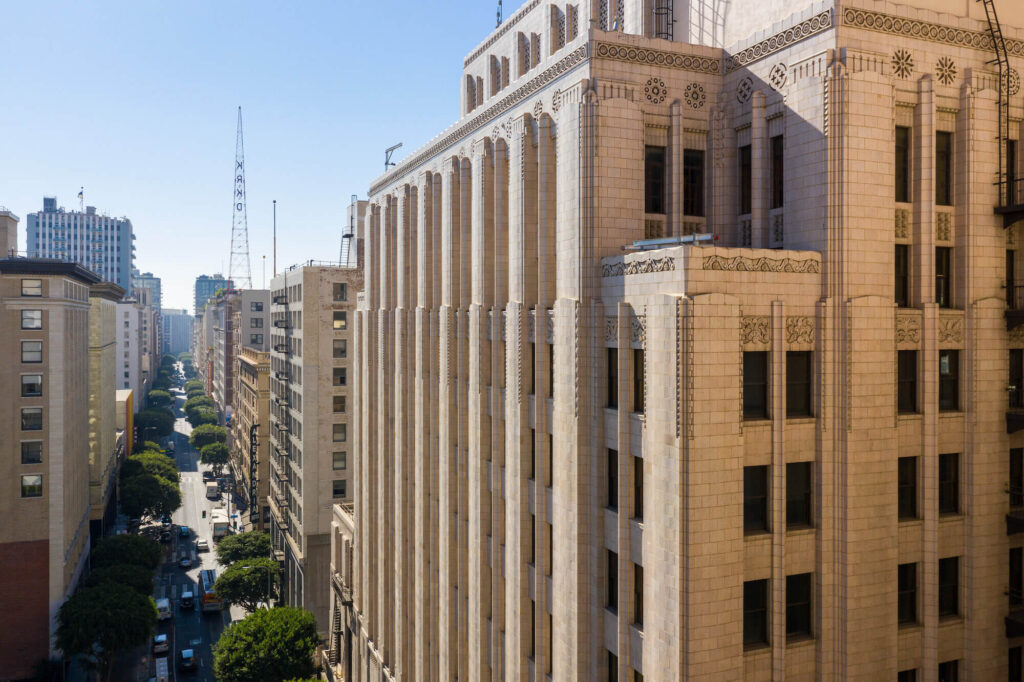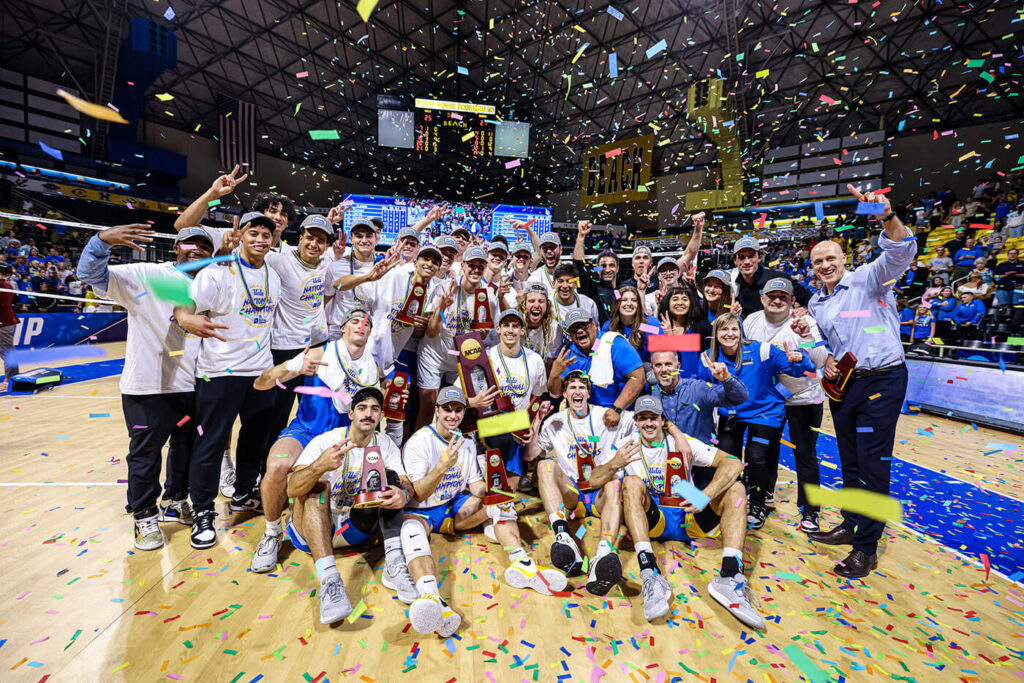
As I prepare to step down as UCLA’s chancellor next week after 17 years in the role, I feel a complex mixture of emotions. But most prominent among them is gratitude to our UCLA community. I have said this before, but serving as the leader of this remarkable university has been the greatest honor of my life.
In my final Quarterly Update as chancellor, I offer a look ahead at a few of the things that make me most excited about the future of UCLA: our campus’s recent physical expansions in the region and the impact they will have; two infrastructure projects that will better connect UCLA to nearby communities, the Metro Purple Line Extension and Sepulveda Transit Corridor projects; and why our transition to the Big Ten — just days away! — matters for both our Bruin athletes and UCLA.
Next Thursday, Executive Vice Chancellor and Provost Darnell Hunt will take up interim leadership of UCLA, and on Jan. 1, 2025, we will welcome our 7th chancellor: Dr. Julio Frenk. Under their stewardship, our university will undoubtedly shine even brighter than ever before.
Fiat Lux,
Gene D. Block
Chancellor
In this issue
- Campus Expansion: A Look Back, A Look Forward
- Connecting with Los Angeles
- UCLA’s Historic Move to the Big Ten: A New Era Begins
Campus Expansion: A Look Back, A Look Forward

One of the great joys of my last few years as chancellor has been overseeing the expansion of UCLA’s physical footprint in Los Angeles County. Since 2022, we have acquired and begun to develop UCLA South Bay in Rancho Palos Verdes and San Pedro, UCLA Downtown in L.A’.s historic city center and the UCLA Research Park in West L.A..
Each new UCLA location signals that we are deeply rooted, invested and engaged in our hometown — that we believe the future of UCLA to be intertwined with that of the great city of Los Angeles. Our recent growth gives us the opportunity to enhance our impact in the region, provides much-needed space and transforms the landscape of possibilities for our institution’s future.
The new UCLA South Bay campus will advance sustainability, climate action and environmental justice. Formerly associated with Marymount California University, the 24.5-acre main campus in Rancho Palos Verdes and an 11-acre residential campus in nearby San Pedro, make up the largest land acquisition in UCLA’s history.
UCLA South Bay promises to be a nexus of instruction, research, scholarship, civic engagement and community engagement, with a vibrant student presence. While our deans and faculty are developing curricula for this new location, it is off to a great start, with teaching, learning and connecting already underway. UCLA Extension began teaching classes there this month. UCLA South Bay has hosted our Student Leadership Academies, the Career Readiness Bootcamp for the Career Center, conferences, meetings and retreats for departments from UCLA and outside groups. The space is helping us cultivate key partnerships with civic leaders at the local, regional and state level as well.
What was once known as the historic Trust Building — a stunning 11-story, 334,000-square-foot high-rise built in 1928 and located near Pershing Square in Los Angeles’ historic core — is now known as UCLA Downtown. This acquisition was the fulfillment of a longtime vision UCLA leaders had for expanding our presence in downtown L.A., allowing us to better serve communities in that part of the city.
By mid-August 2024, eight programs will have established a presence at UCLA Downtown: UCLA Extension, the Latino Policy and Politics Initiative Voting Rights Project, the Center for Justice/Prison Education Program, UCLA School of Law, UCLA Government and Community Relations, the Center for Community College Partnerships, the UCLA Pritzker Center and the California Policy Lab. We are continuing to design and develop the building’s space to make it functional for other programs by early 2026. We are also currently building out the high-rise’s rooftop deck, which will be used for both UCLA and external events.
At the start of this year, we had another groundbreaking development when we announced the purchase of the former Westside Pavilion mall. This 700,000-square-foot property, just two miles from our Westwood campus, is undergoing a remarkable transformation. It will be reshaped into an epicenter of exploration and discovery as the UCLA Research Park, a state-of-the-art research and innovation hub convening scholars and experts, corporate partners, government agencies and startups to serve our global society. As the site for UCLA’s California Institute for Immunology and Immunotherapy, the Research Park will be a vital center for innovative breakthroughs in the fights against cancer and autoimmune, neurological and cardiovascular diseases. As the new home of the Center for Quantum Science and Engineering, it will be a launching pad for a computing power revolution, which is critical for solving intractable problems like the detailed molecular design of drugs. The space will support other programs and initiatives across the disciplines as well.
In May, Flad Architects was selected to design the master plan for the transformation of the research park space. The initial phase of their work should be completed by this fall.
Thanks to these three new locations, UCLA is well equipped to continue its growth, push the boundaries of knowledge and deepen its impact in the region and the world. UCLA and the city of L.A. are unrivaled in potential and possibility, and I cannot wait to see what lies ahead for both.
Connecting with Los Angeles

As we continue to expand our footprint and influence across the Los Angeles region, the logistical connections with our city become almost as important as the relationships we are building and maintaining. When we think about our physical connections to Los Angeles, there are two important transportation projects coming in the near- and long-term that will make our city feel a bit smaller and a lot more accessible.
UCLA is an important part of Los Angeles and a hub for innovation, learning and culture. We are the fourth largest employer in L.A. County and have a daytime population of more than 84,000 students, faculty, staff, patients and visitors. People throughout the region come to campus to cheer on our athletic teams, experience the arts and receive live-saving healthcare. Yet getting this many people to Westwood and back home safely can create significant traffic and at times, gridlock.
The Metro Purple Line (D Line) extension will help improve access to campus and the business and entertainment opportunities in Westwood Village, connecting Westwood and downtown Los Angeles through the Wilshire corridor. The project completed all of its tunnel boring operations in April of this year and is expecting to start serving passengers at the new Wilshire/Westwood station by 2027. Once it is in operation, the expanded D Line will help to connect our main campus to UCLA Downtown without even having to change trains.
The D Line will also play an important role during the upcoming 2028 Olympic and Paralympic Games, when UCLA will serve as the Olympic Village — the temporary home of more than 17,500 athletes and support personnel. They will eat, sleep and practice on our campus, and use the D Line to connect to the rest of the city.
Another exciting transportation project that will improve our ability to connect with the region is L.A. Metro’s future Sepulveda Transit Corridor. This project, which aims to create better transit options between the San Fernando Valley and West L.A., is one of the largest and most significant public works projects in the history of Los Angeles. It has the potential to drastically improve the challenges associated with the stretch of the 405 between the 101 and 10 freeways, known as one of the worst traffic bottlenecks in the world.
While the exact route of the Sepulveda Transit Corridor is still being determined, connecting UCLA directly with the San Fernando Valley will create significant benefits for our community and the region. This project will greatly improve commutes of the approximately 2,350 students and nearly 7,500 staff members who live in the San Fernando Valley and regularly make this trip to campus. UCLA has joined a diverse coalition of academic institutions, neighborhood councils, community and business organizations, as well as environmental and social justice organizations to advocate for a project that connects people seamlessly with their desired destinations and links to the region’s existing public transit network.
Effective and smart infrastructure is a game changer that can significantly improve community well-being. These two historic transportation projects will play a vital role in further expanding UCLA’s connections with Los Angeles, allowing us to better serve the community and supporting our educational mission by improving access to our campus.
UCLA’s Historic Move to the Big Ten: A New Era Begins

On August 2, 2024, a new chapter in UCLA’s storied athletic tradition will begin as we officially join the Big Ten Conference, the oldest NCAA Division I collegiate athletic conference in the nation.
After decades of memorable moments as members of the Pac-12 Conference, including bringing home 123 NCAA championships, our move to the Big Ten opens up new possibilities for both our student-athletes and our fans. The transition will offer student-athletes more opportunities for competition with the best teams in the nation, as well as provide greater visibility and a bigger stage for our Bruins to showcase their abilities. Participation in the Big Ten Conference will also support the long-term health of UCLA’s athletics enterprise.
We are placing our players at the center of this transition, investing new revenue from the conference into supporting our student-athletes and providing them with greater academic, nutrition and health resources. This includes additional academic support staff for travel, counseling, daily meals, additional dietitians and improved travel accommodations. The transition to the Big Ten will also provide more name, image and likeness (NIL) opportunities for our student-athletes, which allow them to earn money from personal endorsements, sponsorships and partnerships.
As we prepare for this change, we are proud to highlight the achievements of our student-athletes on the world stage. Several of our Bruins, including students and alumni from our table tennis, men’s rugby, volleyball, swimming, golf and gymnastics teams, will represent UCLA and their countries as competitors and coaches at the Paris Olympics this summer.
While the official transition to the Big Ten takes place on Aug. 2, UCLA’s inaugural Big Ten game will be our football game against Indiana University at the Rose Bowl on September 14. This game also marks DeShaun Foster’s home debut as our new head coach and will feature the Hall of Fame Class of 2024 induction. UCLA fans’ enthusiasm and loyalty are the bedrock of Bruin pride and I hope you can join the event. For those unable to attend in person, the game will be televised on NBC, one of our new Big Ten media partners.
Bruins are embracing this new era with the same spirit of determination and excellence that has always defined UCLA and UCLA Athletics. The transition will ensure that our long legacy of athletics success can continue far into the future.
